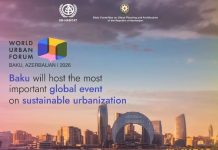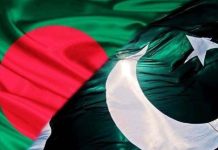Mohsen Milani
In normal presidential elections, it is only the candidates and their platforms that matter. Not so in Iran. There, the key player in the upcoming presidential elections is the septuagenarian supreme leader, Ayatollah Ali Khamenei, who is constitutionally barred from running for the office. He recognizes that the election result will have a profound impact on his own rule and on the stability of the Islamic Republic. So behind the scenes, he has been doing everything in his power to make sure that the election serves his interests. But the eleventh-hour declarations of candidacy by Hashemi Rafsanjani, Iran’s president between 1989 and 1997, and by Esfandiar Rahim Mashaei, President Mahmoud Ahmadinejad’s chief of staff and close confidant, have made his task more difficult.
The first part of Khamenei’s four-pronged strategy is to conduct an orderly election. The nightmare scenario for Khamenei is a repeat of the June 2009 presidential election, in which allegations that Ahmadinejad had stolen victory from his challenger, Mir Hossein Mousavi, led to massive demonstrations and the birth of the popular reformist Green Movement.
Khamenei could have stayed above the fray, as elites expected him to do. Instead, he lost credibility as a neutral arbiter when he sided with Ahmadinejad, rejected all allegations of fraud, and blamed Ahmadinejad’s opponents for inciting violence. His offer of public support for the president opened a fissure among the elites that has never quite healed. It also preceded a massive crackdown on activists who were castigated as American stooges and arrested. Even more, the disputed election alienated millions who felt truly robbed of their voices.
Given that history, Khamenei has made a concerted effort this time around to discredit potential protesters before they take to the streets. The Revolutionary Guards and security forces have launched a propaganda campaign to link any interruption on election day or after to the United States and its purported plans to destabilize the regime. For example, Yadollah Javani, the head of the political bureau of the Revolutionary Guards, has warned that the slogan “free and fair election” is a U.S. code word for sedition.
All this comes at a time when the Revolutionary Guards and security forces have enjoyed even more impunity than usual as they arrest activists and bloggers and shutter hostile websites and newspapers. In March 2013, the government claimed that it discovered and shut down a network of some 600 anti-government journalists who were planning to disrupt the presidential election. In reality, they were placed under surveillance in order to cut off their links to journalists and activists outside of Iran. And although there has not yet been any increase of forces on the streets, one can be sure that in June, the police will be ready for action.
The second component of Khamenei’s electoral strategy is to encourage a high voter turnout, which, he believes, will give the Islamic Republic back its veneer of electoral legitimacy. If anything, 2009 taught many voters, especially urban ones, that voting was pointless. The government has real fears that they simply won’t show up this June. To make sure that doesn’t happen and that at least as many Iranians as usual (60 to 65 percent) turn out, the regime scheduled the presidential election to take place simultaneously with the elections for the local councils. In those, which occur at the city, town, and village level, hundreds of thousands of candidates from every corner of the country will compete for thousands of seats. And the candidates will be of all stripes, since they do not have to be vetted by the regime. As those in the past, these races will likely boost voter participation this time.
Khamenei’s third strategy is to dissuade candidates that he does not trust to be sufficiently subservient from running. To achieve this goal, his first line of attack is to rely on the media and his surrogates within the clerical establishment, such as Ayatollah Ahmad Khatami, to defame unfriendly candidates. Khamenei used this strategy to good effect against former president Muhammad Khatami, who declared his intention to run this spring. After throwing his hat in the ring, Khatami was lambasted in the media for initiating reforms during his presidency that weakened the Islamic Republic. He was also criticized for supporting the Green Movement. In the end, he decided not to run.
Khamenei’s other option is to rely on the Guardian Council to disqualify any candidate with a questionable ideological commitment to the supreme leader. Khamenei appointed six of the 12 members of this powerful institution, which is tasked with interpreting and protecting Iran’s constitution and approving candidates for the Assembly of Experts, the presidency, and the Majlis. Khamenei will turn to that body to deal with Mashaei and Rafsanjani.
Mashaei is the easier case. Ahmadinejad dreams of using him to pull a Putin-Medvedev trick, in which the latter wins a term as president, lets the former rule from behind the scenes, and then supports Ahmadinejad’s return to power when the time is right. But things are unlikely to play out that way: Ahmadinejad has far too many enemies to stay around for long. He was a “useful idiot” for Khamenei, who, as parliamentarian Ali Motahari has said, was supported “as an effective instrument for eliminating Hashemi [Rafsanjani] and the reformists.” In addition, Mashaei is intensely disliked by conservatives and Khamenei. He has been vilified for propagating a “deviant current,” which supposedly rejects direct rule by the clerics and champions Iranian nationalism as opposed to Islamism. Khamenei issued a decree four years ago that prohibited Ahmadinejad from appointing Mashaei as first vice president.
Mashaei, undaunted by the odds, officially declared his candidacy over the weekend. If the Guardian Council disqualifies him, that would leave Mashaei with two options: ask Ahmadinejad to interrupt by postponing the elections or go down quietly, supporting his other, less known, supporters in the race. Given Khamenei’s stern warnings that he will tolerate no mischief, Ahmadinejad surely knows that he will be dealt with harshly if he foments trouble.
Khamenei also has to deal with the complex case of Rafsanjani. A seasoned statesman, the cunning 78-year-old Rafsanjani was close to Ayatollah Khomeini and has been a friend of Khamenei’s since the pre-revolutionary period, when both men where part of Khomeini’s secret network inside Iran. Khamenei and Rafsanjani engineered Khamenei’s selection as supreme leader after Khomeini died, and the two men worked closely together when Rafsanjani served as president in the 1990s.
Their relationship began to deteriorate after the 2005 election, when Ahmadinejad defeated Rafsanjani. Rafsanjani implied that the election had been fraudulent, but did not pursue the allegation. Ties were weakened further after the 2009 election, when Khamenei declared that he was ideologically closer to Ahmadinejad than to Rafsanjani; he then accused Rafsanjani of masterminding the Green Movement and barred him from delivering Friday prayer sermons. Rafsanjani also lost his position as Chairman of the Assembly of Experts for Leadership and two of his children were jailed.
As soon as Rafsanjani declared his intention to run in the upcoming election, he was pressured to back down. Khamenei is right to be worried about Rafsanjani: Rafsanjani is the only candidate with the prerequisite skills, vision, savvy, and popular support to pose a serious challenge should he win the election. He has a developed network of supporters inside the government, the Revolutionary Guards, and the clerical establishment. Khatami has endorsed him, and all major reformist organizations could be expected to support him as well. He has pledged to moderate Iranian foreign policy and resolve the nuclear impasse. He has also declared that Iran is “not at war with Israel,” but would join the Arabs if they declared war. Finally, he has stated that the legitimacy of the supreme leader emanates not just from God but also from the will of people.
As part of the smear campaign to discredit Rafsanjani, Khamenei’s older brother labeled the former president “the best individual for American conspiracy against the Islamic Republic.” To immunize himself against such attacks, Rafsanjani declared that he would run only if the supreme leader did not object — and, reportedly, he has not. It would be difficult (although not unfathomable) for the Guardian Council to now disqualify Rafsanjani. After all, he has consistently held the most sensitive positions in the Islamic Republic, ranging from acting Commander of the Armed Forces to Speaker of the Majlis to the presidency.
Facing a potential challenge from Rafsanjani, Khamenei must also push for his own preferred candidates without actually endorsing them or appearing partisan — the fourth and final part of his strategy. It is an open secret that Khamenei favors the conservatives. He seems to particularly support the Coalition of Three, which consists of Gholam Ali Haddad Adel, a former speaker of the parliament, Mohammad Baqir Ghalibaf, the mayor of Tehran and a former Revolutionary Guard, and Ali Akbar Velayati, a former foreign minister. The three have worked closely with him on a variety of issues over the past few years and are trusted by him. Velayati is the most seasoned among them and seems to be Khamenei’s favorite. He has been a member of Khamenei’s “kitchen cabinet” for a long time. This group faces the twin challenges of chosing their main candidate and then unifying all the conservatives behind that person. After the Guardian Council completes its review of all candidates within the next week or so, Khamenei can rely on the mass media and his surrogates to promote his pick.
Should Khamenei’s strategy succeed, leaving him with the president of his choice, he will further consolidate his control of the government. This will intensify the lingering tensions between the state and Iran’s vibrant civil society, which demands political reform, accountability, and freedom. With a pliant president, meanwhile, Khamenei could also indirectly influence the elections for the Assembly of Experts for Leadership, scheduled for 2014. This body has the power to remove Khamenei or, in the case of his death, select his successor. A trusted next president would also guarantee continuity in Khamenei’s nuclear strategy and unwavering support for Syria, his top two priorities.,
If however, Khamenei’s strategy does not succeed, and Rafsanjani wins the presidency, Khamenei’s further consolidation of power will become more difficult. Rafsanjani’s victory could help bridge the divide among the elites that was created after the disputed election of 2009 and that, in turn, could lead to a slight opening of the political process. It also could increase the chances for a peaceful resolution of Iran’s nuclear dispute with the West. To be effective, though, Rafsanjani, or whoever wins the presidency, must ultimately still collaborate with Khamenei. For the time being, then, Khamenei will remain Iran’s final decider, however the upcoming elections play out. Courtesy Foreign Affairs











